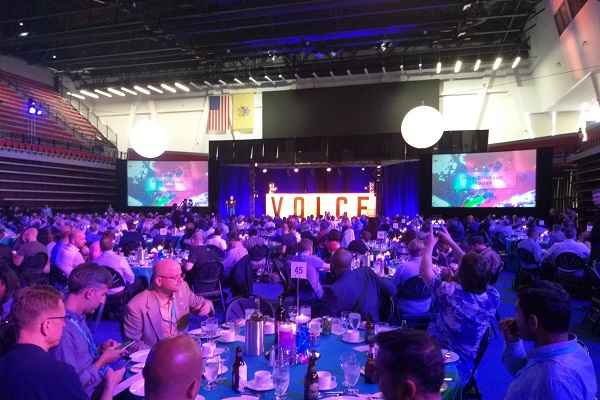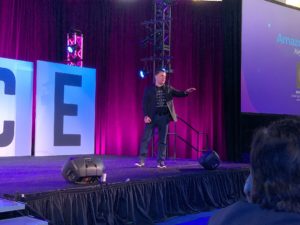Four Takeaways From VOICE 19 & Links to Stories That Shaped The Discussions

The VOICE 19 conference ended yesterday after a week packed with insights and discussion on every aspect of voice technology. Experts from around the world explored the state of the industry today and what it might look like tomorrow. Voicebot published 20 articles related to the conference to help everyone keep abreast of the activity.
While it would have been impossible for anyone to see even half of the show, even before considering the startup expo hall, there were some notable themes and ideas touched on by the conference as a whole. To close out our coverage of the event this week (we have a few more trailing articles teed up for next week so stayed tuned), here are some of the highlights that stood out.
Accessible Voices

Accessibility was a theme throughout the conference. This vital issue can fall by the wayside, so the emphasis VOICE 19 placed on it is worth noting. There were panels and discussions on the subject throughout the event, including a visit from students from the local school for the deaf. The last day of the conference really brought home the value of the subject, with keynotes from Open Style Lab founder Christina Mallon, who has ALS, and Thomas Chappell, a senior associate for Infra Sysdev, who gave his entire talk in sign language.
Human Element

The amazing potential of voice technology is very clear, but the best way to make people happy with it is still evolving according to discussions of psychology and use cases during the conference. The speed of voice tech is irrelevant if people don’t want to use it. According to Mark Jamison, the Global Head of Innovation and Design for Visa, adding confirmation steps and slowing down the process of carrying out financial transactions by voice is needed to make people comfortable. In other instances, accelerating interactions by removing friction is a key benefit for users according to Amazon’s Dave Isbitski.
There is also an increasing blend of the human and artificial intelligence worlds. David Ciccarelli of Voices.com pointed out that 15% of voice app developers have launched a voice app that includes a human voiceover actor delivering at least some of the audio experience.
Story Design

Looking for ways to make people want to use voice tech means examining how voice apps are built, and the consensus seems to be that designers should be more involved. Right at the top of the event, Dave Isbitski, chief evangelist for Alexa and Echo at Amazon, showed off the company’s new Skill Flow Builder, a tool explicitly designed for non-technical designers to add and adjust story content to games and other apps. Design focus is also what motivated Adobe to create the new Adobe XD plugin for voice and related Alexa skill at VOICE 19. Again, the shift gives designers, whose jobs center on making the apps pleasant for customers to use, an easier time creating and testing voice skills.
In addition, there were dozens of conference sessions dedicated to voice user experience. These were some of the best-attended breakout sessions. Google held a voice UX design workshop during Monday’s pre-conference sessions that was attended by nearly 200 people and Amazon’s Paul Cutsinger drew a large crowd to the main stage with his discussion about the differences between user and system-initiated voice interactive experiences.
Voice is Universal

The fact that there are so many debates and arguments to be had about the future of voice technology illustrates just how broad the industry is. You only need to look at the winners of the VOICE19 awards, not to mention the Alexa Cup and Samsung Bixby Developer Sessions award winners, to understand that there’s no facet of business or experience that voice technology is excluded from. The real question now is where in people’s lives voice tech will be integrated next.
Voicebot Coverage of Voice 19
How ID R&D Is Making Biometric Identification 10 Times Faster
New Enterprise Voice App Creation Platform Vobo.ai Joins Competition
Audioburst Brings Audio Content Discovery to Android Auto and Bixby
Follow @voicebotai Follow @erichschwartz








